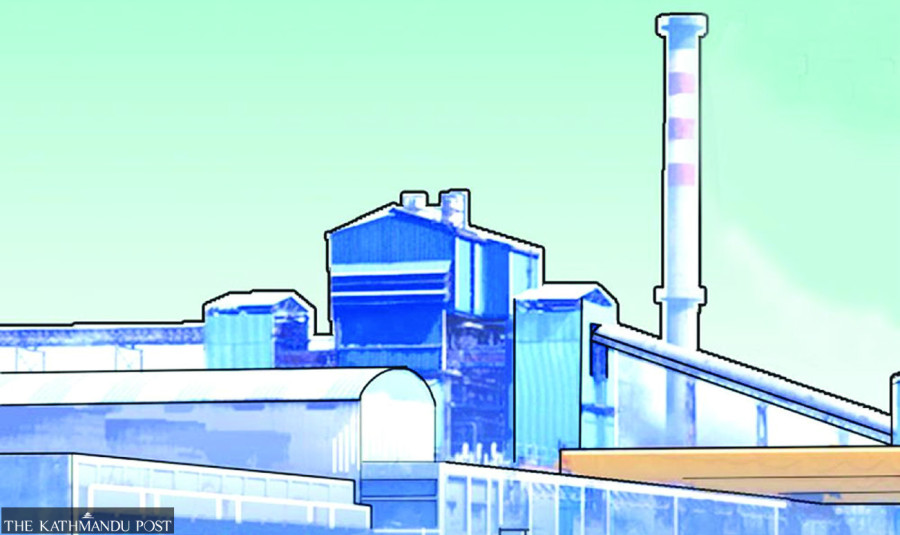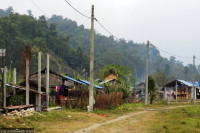National
Industrial outage may continue for a month
Factories are facing up to 14 hours of power cuts in the eastern industrial belt as electricity imports get too costly.
Prithvi Man Shrestha
Nepal Electricity Authority on Tuesday cut power supply for 14 hours to the Morang-Sunsari Industrial Corridor, reminding the days when people were used to a prolonged load-shedding just five years ago.
The state-owned power utility body had ended residential load-shedding in early 2017 and industrial load-shedding in May 2018.
After a gap of nearly four years, the Nepal Electricity Authority (NEA) has resumed imposing unannounced load-shedding in industrial areas after the power utility body was unable to purchase enough electricity from India’s power exchange market and the Bihar state of India stopped supplying electricity during night time under the fixed pricing arrangement between the two countries.
“The NEA cut power for 14 hours—from 4pm on Tuesday to 6am on Wednesday in the eastern industrial belt,” Bhim Prasad Ghimire, Province 1 president of the Confederation of Nepalese Industries (CNI) said. “Load-shedding began at 6pm on Wednesday too. This reminded us of the days when we were facing prolonged loadshedding up to 18 hours a day in the past.”
The country has to rely on imported power in the winter as power plants in the country produce just one third of their total installed capacity of over 2000MW.
According to the NEA, current peak hour demand for electricity is over 1600MW while the projects are producing around 650MW and the NEA was relying on imported power to bridge the shortfall.
But, over the last one week, the NEA has failed to procure power as per the country’s needs.
“We have been importing around 500MW-550MW in the daytime which is insufficient to meet the demands,” said Suresh Bhattarai, spokesperson at the NEA.
According to him, despite its readiness to pay competitive prices in the Indian Energy Exchange Limited, the NEA has been unable to secure more than a third of its demand.
“On the other hand, the Bihar state of India has not supplied electricity in the night time from 6pm to 6am under the fixed-price arrangement. So, we have been unable to supply electricity to factories at night,” said Bhattarai.
According to him, the NEA has been paying on average INR16 per unit in recent days for importing electricity from India’s energy exchange market.
“In fact, supply of power in India's energy exchange market is currently low because of rising prices of coal and petroleum products which are used to produce power in India,” said Bhattarai. The prices of coal and petroleum products have skyrocketed since the Russian invasion of Ukraine. “So, Indian power producers have been selling just 10 percent of what they used to sell earlier,” said Bhattarai.
It is still unclear when will the Ukraine war end. So, Nepal may be forced to continue load-shedding until water levels in Nepali rivers rise and power plants run in full capacity, according to NEA officials.
Bhattarai said that it will take around a month for domestic hydropower plants to start producing more power when water levels in the rivers rise along with the melting of snow in the Himalayas.
But industrialists are already worried by the prolonged power cuts in recent days.
Early this week, Province 1 chapter of the CNI sent a memorandum to the NEA urging it to resolve the shortage arguing that power cuts are causing further losses to the industrial firms, which were badly hit by the Covid-19 pandemic.
“Continuation of load-shedding has affected industrial production and it may affect employment too,” the memorandum reads.
Ghimire said the industries which were operating three shifts a day, have been forced to run for just one shift. “Jute, cement, iron and steel and bricks and plastic factories were operating three shifts a day. They are now being forced to operate one shift a day due to the load-shedding,” he said. “Continuation of the situation will force us to lay off workers.”




 11.12°C Kathmandu
11.12°C Kathmandu













%20(1).jpg&w=300&height=200)

